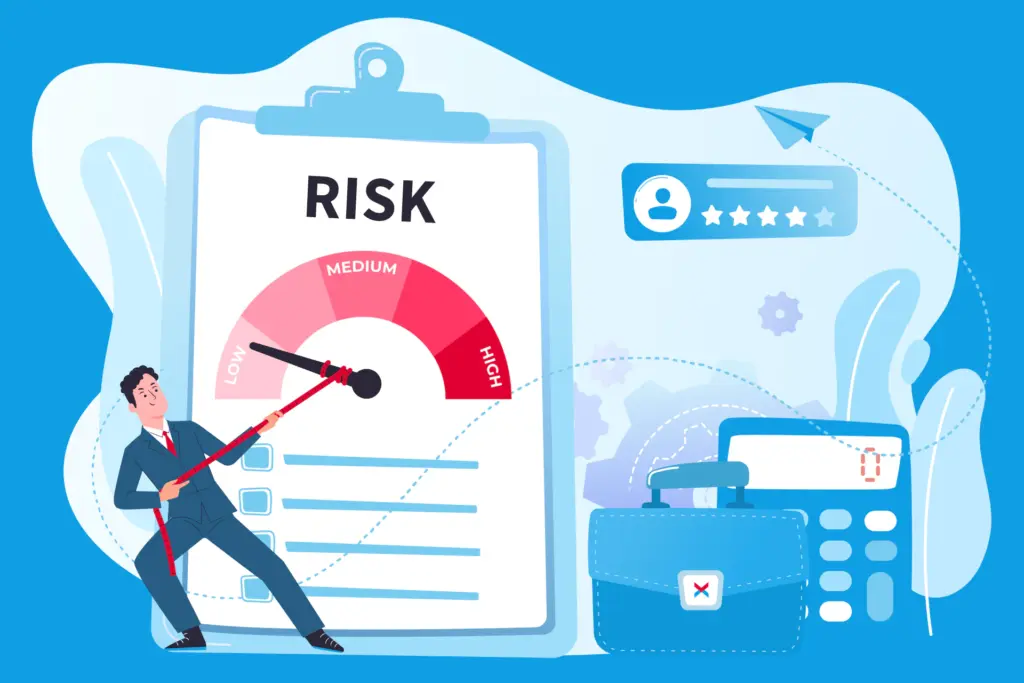Small businesses face growing challenges in protecting sensitive information due to limited resources and increasing cyber threats. Losing critical data can disrupt operations, damage reputation, and incur significant financial penalties. Many organizations underestimate the consequences of incomplete record management, relying on manual systems, unsecured devices, or inconsistent backup practices. Implementing smarter data practices reduces these risks by creating structured workflows, secure storage solutions, and proactive monitoring. Businesses that prioritize disciplined data management gain stronger operational resilience, increased efficiency, and greater confidence in handling sensitive records in both day-to-day operations and emergency situations.
Common data risks for small businesses

Small businesses encounter multiple data risks, including accidental deletion, cyberattacks, system failures, and human error. Each of these events has the potential to disrupt daily operations, delay client projects, and result in lost revenue. Regulatory compliance also suffers when records are incomplete, misplaced, or insecure, which can lead to fines, penalties, or legal action. Customer trust is compromised when sensitive information is exposed, which can have long-term reputational consequences.
Many small organizations face vulnerabilities because they lack consistent backup practices, do not enforce strict access controls, and rely on unprotected devices or outdated software. Even minor errors, such as mislabeling files or storing records in shared folders without clear protocols, can escalate into significant operational problems. Recognizing these risks is the first step toward implementing effective solutions that protect sensitive data while maintaining business continuity.
Importance of structured data management

Structured data management minimizes risks by organizing, classifying, and securely storing information. Proper workflows ensure that all records follow defined creation, retention, and access procedures. This organization improves oversight, supports audit readiness, and allows rapid response when issues arise.
Businesses benefit from clearly documented procedures because employees follow predictable steps when handling data. Standardized naming conventions, version control, and consistent storage locations reduce errors and prevent misplacement. Structured management also ensures that sensitive records are accessible when needed, which is critical during audits, regulatory reviews, or operational incidents.
In addition, structured processes simplify employee onboarding and training. New staff can quickly understand the system and access critical information securely. Standardization also supports operational efficiency, allowing employees to complete tasks faster and reduce unnecessary duplication of effort. By implementing structured practices, small businesses maintain control over their records while minimizing exposure to security gaps.
Implementing secure destruction and storage solutions

Protecting sensitive data includes the secure disposal of obsolete or redundant information. For organizations handling confidential digital records, secure hard drive destruction ensures that old media cannot be recovered or misused. This process protects businesses from potential breaches, prevents accidental disclosure, and aligns with legal and regulatory requirements for record disposal.
Maintaining redundancy through multiple backup locations or media formats also improves resilience. Combining cloud storage with physical media or encrypted local backups ensures that even if one system fails, another is available to restore critical information. A disciplined approach to secure storage and destruction minimizes exposure while maintaining operational continuity under both normal and disruptive conditions.
Enhancing protection through cybersecurity practices

Effective data protection requires integrating modern cybersecurity measures into daily operations. Cybersecurity at the data level ensures that sensitive information remains protected regardless of location or platform. A single breach can result in financial loss, reputational damage, and legal consequences, making proactive cybersecurity essential for small businesses.
Businesses can implement data-centric security to monitor access, enforce encryption, and control permissions across all records. These practices prevent unauthorized access, detect suspicious activity, and reduce exposure to breaches. Regularly updating software, implementing firewalls, and securing endpoints further strengthen overall security. Combining cybersecurity measures with structured documentation workflows ensures that sensitive records remain protected throughout their lifecycle.
Preventing loss with proactive strategies

Proactive measures reduce the likelihood of data loss and operational disruptions. Automated backups, system monitoring, and clearly defined retention policies ensure that records are consistently protected. Early identification of issues reduces the risk of permanent data loss and allows businesses to address problems before they escalate.
Implementing data loss prevention tools allows businesses to detect accidental or malicious attempts to delete or alter sensitive information. These systems provide alerts for unauthorized activity, enforce data access policies, and maintain detailed audit trails for accountability. Early detection and prevention measures limit downtime, protect customer information, and enhance overall business resilience. Businesses that combine proactive tools with structured workflows can respond efficiently to incidents while maintaining operational continuity.
Employee training and internal accountability

Even the most advanced systems fail if employees are not trained to follow proper procedures. Staff must understand safe storage practices, secure sharing protocols, and the correct process for reporting incidents. A lack of awareness or understanding among employees often contributes to accidental data loss, misplacement, or exposure.
Consistent training reinforces accountability and reduces human error while supporting technical controls. Employees who follow disciplined routines contribute to a secure environment while maintaining operational efficiency. Establishing clear expectations and monitoring compliance ensures that staff maintain good habits, handle sensitive records responsibly, and contribute to a culture of data protection across the organization.
Regular audits and continuous improvement

Continuous monitoring and regular audits are essential to maintain secure documentation practices. Businesses should review storage procedures, access permissions, and backup protocols to identify outdated files, procedural gaps, or areas of vulnerability. Auditing ensures that workflows remain effective and that systems align with current threats and regulations.
Small businesses benefit from continuous improvement by updating practices as technology and security threats evolve. Scheduled reviews confirm that backup schedules, cybersecurity measures, and data loss prevention tools remain effective. Continuous monitoring helps organizations detect weaknesses early, implement corrective actions, and maintain a reliable framework for long-term data protection.
Best practices for long-term data risk management

Implementing structured workflows, secure destruction processes, cybersecurity integration, data loss prevention measures, and employee training creates a comprehensive framework for reducing risks. Each practice addresses specific vulnerabilities while collectively building resilience against operational, financial, and regulatory threats.
Long-term risk management requires ongoing commitment to process improvement, adherence to retention schedules, and proactive monitoring. Businesses that embrace these strategies reduce operational disruption, maintain compliance, and protect customer trust. Establishing a culture of accountability ensures that sensitive information remains secure, while disciplined practices enable business continuity even during challenging events.
Conclusion

Small businesses significantly reduce operational, regulatory, and reputational risks by adopting smarter data practices. Structured workflows, secure destruction, cybersecurity integration, data loss prevention, and consistent employee training provide a foundation for reliable protection. Proactive and disciplined approaches safeguard both business and customer information while maintaining operational resilience, efficiency, and long-term sustainability. Organizations that invest in these strategies create a secure environment that supports growth, compliance, and ongoing operational success.
- 0shares
- Facebook0
- Pinterest0
- Twitter0


